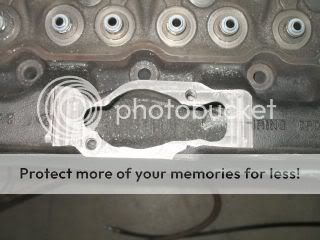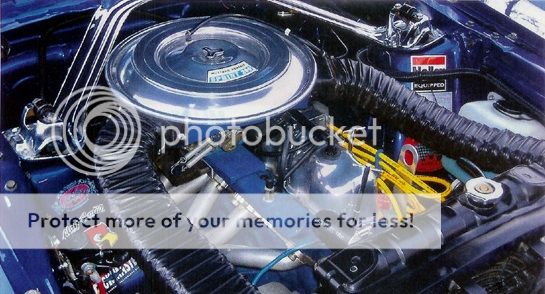Plugging wsa111'S RWHP 139 hp chassis dyno figure into the formula, I get 227 hp net at the flywheel.
I use 1.63 factor.
This is because that's what I've seen on all 200 to 250 automatic Fords, shift kitted, high stall, whatever.
The way its decribed elseware on on line % calculations is not what I'm used to.
I use what I should have called a correction factor, which isn't actually a percent the way others use it.
The 1979 Crossflow 250 made 120 hp, or 92 Kilowatts of power at 3600 rpm, and only 62.6 Kilowatts of power at the rear wheels on a chassis dyno.
The factor redcution was just 1.46, but as a percetange, others recon it as 31%, the complement of the on line % generators 68%
http://www.onlineconversion.com/percentcalc.htm
 viewtopic.php?f=3&t=19190
viewtopic.php?f=3&t=19190
1.60 factor loss in the 1979 Cortina 250 six (92 kw [120 hp], and 288 Nm [212 lb-ft] on the factory rating), but 57 KW and 168 Nm on the chassis dyno with a 3 stage auto
1.46 factor loss in the Falcon 250 six (92 kw [120 hp], and 288 Nm [212 lb-ft] on the factory rating), but 62.6 KW and 185 Nm on the chassis dyno with a 3 stage auto
For the Holden Kingswood with the GM 180 3 speed and 201 cubic inch 3.3 liter, it had 66 kW net listed, and 221 Nm in the adjusted factory Net outputs, but 41 kW and 122.4 Nm at the bags, or an 61% power loss
Based on the C4 and other Ford automatic transmissions verses the net flywheel factory ratings, a tranmissionand axle loss is up to 1.67, and as little as 1.39. As a manual, 1.264 factor, down to 1.163 as a manual.
It was wrong of me to ever use the term percent. Percent is per hundred, and is a confusing term, although very nice if your working out Gross Margins as an Chartered Accountant.
I've repeated the counterweight and electric dyno issues before, and they relate to automatic cars directly. The dynamic loss at the drags pans out as little as 1.15 to 1.17 if you use a transbraked C4. 1.10 to 1.11, well, its just an on line formula.
A very high level check was done in Australia by Chevy Off-road and Marine Engines in 1996.
The Australian (US made Cleveland built Windor OHV 5.0 was the 1992-1995 Mustang 5.0 or 1996-2001 Explorer engine. Ratings were the US engine, less 1.017 or its inverse, because you guys use SAE net, Australians use the German DIN net spec.
Your 235 hp SAE net SVT Cobra for 1993 was 268 hp DIN net on our same engined 1993 Ford (Australia) EBII Falcon GT, so go figure....that's the only case of cheating I can find from 1983 to date.
The other was the 1982 157 or 161 hp 2-bbl GT HO Mustang and RS Capri engine. Never again was a Mustang able to go as fast or as quickly again untill the 1986 5.0 HO EFI Mustang, which was 10 hp down on the 1985 4-bbl Mustang Capri engine, which was slower than the October 1981 Dearborn prototype Mustangs and Capris.
For 1995, the Aussie market, US made 5.0 it was 221.3 hp DIN net, and with a T5 and 9 bolt 7-7/8" axle, it made exactly 175 rwhp.
Factor reduction was 1.264.
Same deal was done during the Dana 44/ 8.8 axle era, same hp loss, axle made little difference.
Automatics, based on historical Australian Ford data using Stewart's Mustang Dyno from 1976 to 1981, yielded
1.63 to 1.41 reduction on non lockup automatic's with 7-7/8 to 9" axles.
You guys get
1.40 for AOD/9"
And
1.163 for Muncie M22/12 Bolt 8.8"
http://www.hotrod.com/articles/ccrp-0311-drivetrain-power-loss/
http://vb.foureyedpride.com/showthread.php?135557-Chasis-dyno-vs-engine-dyno
https://fordsix.com/viewtopic.php?t=71753
Note that in a drag race, net flywheel to rear wheel hp losses are different to chassis dyno verses engine dyno.
Its the flywheel effect that creates the disparity, and automatics do much better at drags than manuals.
All those "14-18% loss for manuals and around 19-24% loss from automatics" are true, but that's
percentage,
not a
decimnalized factor.
On a chassis dyno, the total loss is more like a 1.27 to 1.60
factor, and it depends on transmission type, if it has a torque converter, and its stall speed. When you drag race a shift kitted auto, there is still a 1.05 to 1.06 factor loss in power over a manual. In addition, flywheel hp ratings for 80's Fords were SAE net, probably the most accurate and best controlled measure ever.



































